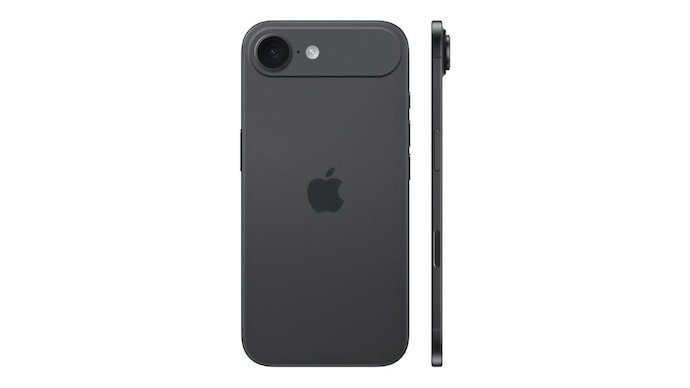Apple may give single camera to iPhone 17 Air to make it thinner
Apple is reportedly set to launch its thinnest iPhone ever, the iPhone 17 Air, by 2025 with a single rear camera and eSIM technology.
listen to the story

Apple is reportedly planning to create its thinnest iPhone ever. After pushing hardware boundaries with the MacBook Air, iPad Air and the iPad Pro with the M4 chip – the thinnest iPad ever – the Cupertino giant is now reportedly focusing on creating a thinner smartphone. Not just thin, but the thinnest iPhone ever, measuring just between 5mm and 6mm thick. However, this ultra-thin design will come with some compromises, including a smaller battery and only one camera.
According to a recent report from The Information’s Wen Ma and Qian’er Liu, Apple’s development of its thinnest iPhone, tentatively called the iPhone 17 Air, aims to achieve its attractive profile by giving it a single rear camera. The rear camera is also expected to have a 48-megapixel sensor, while the front-facing camera will have a 24-megapixel sensor for selfies and FaceTime calls.
Apart from the single-camera setup, the iPhone 17 Air is expected to lack a physical SIM card tray, relying entirely on eSIM technology. While this is in line with Apple’s shift toward an eSIM-only model in the US, it may limit flexibility for users in regions where eSIM adoption is still limited.
Additionally, Apple is also reportedly planning to remove the bottom-edge speaker, which is currently a major part of recent iPhones. Instead, due to space constraints the device will reportedly have only one speaker located in the earpiece. Connectivity may also be impacted, as the device is rumored to use an Apple-designed 5G modem that may not support ultra-fast mmWave 5G, resulting in slower speeds compared to Qualcomm’s current modem. Data speeds may be slow.
Battery life is another concern, as the iPhone 17 Air is rumored to have a smaller battery than its predecessors. Reports suggest that Apple is struggling to fit a large enough battery in the device’s ultra-thin chassis.
Despite these compromises, the iPhone 17 Air is expected to have impressive hardware. It will likely have a 6.6-inch display with Dynamic Island, an A19 chip for better performance and energy efficiency, and 8GB of RAM to support Apple Intelligence features. An aluminum frame will ensure durability while contributing to the device’s lightweight design.
In addition to the iPhone 17 Air, the iPhone 17 lineup will also include the standard iPhone 17 and more premium Pro models. The iPhone 17 Pro and Pro Max are expected to have significant design changes, including a shift from titanium to aluminum frames for a lighter construction. These models will reportedly adopt a part-aluminum, part-glass rear design to allow seamless wireless charging.
The Pro model is expected to receive camera improvements, including a larger, rectangular camera bump integrated into the aluminum rear. Advanced camera systems will probably be the main focus to meet the needs of photography enthusiasts.
As per the launch timeline, Apple is expected to unveil the iPhone 17 series in September 2025.




